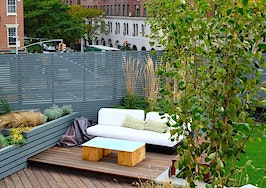- Rental price fluctuations shown in the report were not as aggressive, with a slight .59 percent decrease between January and February.
- Gramercy doorman-operated, two-bedrooms had less than 20 units at the time of review, which could have shifted the neighborhood's balance.
- The highest increases were seen in Gramercy non-doorman, two-bedroom units, which went up 4.7 percent. Similar units in East Village also increased 3.7 percent on average.
- SoHo saw the biggest overall year-over-year drop at 7.9 percent due to the least number of units, but not necessarily due to low demand.
As Manhattan nears the fast-paced rental season, listings are still scarce, according to the MNS February Market Report.
Last month, inventory decreased by 4.44 percent, from 9,007 rental units to 8,607 units.
“There’s definitely a lot of seasonality for the rental market. Memorial and Labor Day are when the market peaks in terms of the highest points. November, December and January are the lowest,” CEO of MNS, Andrew Barrocas, said. “You will see inventory levels drop in the winter.”
[Tweet “Rental price fluctuations shown in MNS report were not aggressive”]
Rental price fluctuations shown in the report were not as aggressive, with a slight .59 percent decrease between January and February. The average rent in Manhattan dropped from $3,873 in January to $3,850 last month. Some neighborhood units, including SoHo doorman studios and one-bedrooms, consisted of less than 20 units at the time of market analysis.
All neighborhoods in Manhattan featured price shifts of a plus or minus .2 percent last month due to seasonality, but some fared better than others.
Big drops in Gramercy and SoHo due to fewer units
While Gramercy Park doorman-operated, two-bedrooms dropped 8.4 percent in average price, from $6,513 in January to $5,968 in February, a decline in inventory and higher-priced units entering the market affected the average price notably. Gramercy doorman-operated, two-bedrooms had less than 20 units at the time of review, which could have shifted the balance.
[graphiq id=”guF3F1N3QEd” title=”SoHo Manhattan, NY Profile” width=”600″ height=”603″ url=”https://w.graphiq.com/w/guF3F1N3QEd” link=”http://places.findthehome.com/l/146073/SoHo-Manhattan-NY” link_text=”SoHo Manhattan, NY Profile | FindTheHome”]
An even larger decline was seen in SoHo doorman studios in February, where prices dwindled 22 percent, from $3,200 to $2,498 last month. However, the sample was based solely on two low-priced units under $2,600, which is somewhat uncommon in the neighborhood.
Gramercy wins for two-bed units
The highest increases were seen in Gramercy non-doorman, two-bedroom units, which went up 4.7 percent from January when they were at $3,868 and grew to $4,050 last month. MNS notes lower priced units coming off the two-bedroom market drove up the average price in Gramercy.
The East Village neighborhood also increased 3.7 percent in average rent price for doorman-operated, one-bedroom apartments, from $4,365 to $4,525.
The Upper West Side: Bigger boundaries creating higher demand
From last February, the Upper West Side has risen 4.1 percent in price. This upsurge is attributed to non-doorman units increasing between 4 and 7 percent.
“What’s standard is 3 percent growth, so 4 percent is not outrageous, but the area continues to grow. The boundaries have been expanded. At one point, it was 86th Street, then it was 96th Street, and now, we’re up to 125th Street. The area has expanded with more people, more retail and more infrastructure,” Barrocas said.
SoHo saw the biggest overall year-over-year drop at 7.9 percent due to the least number of units, but not necessarily due to low demand.





